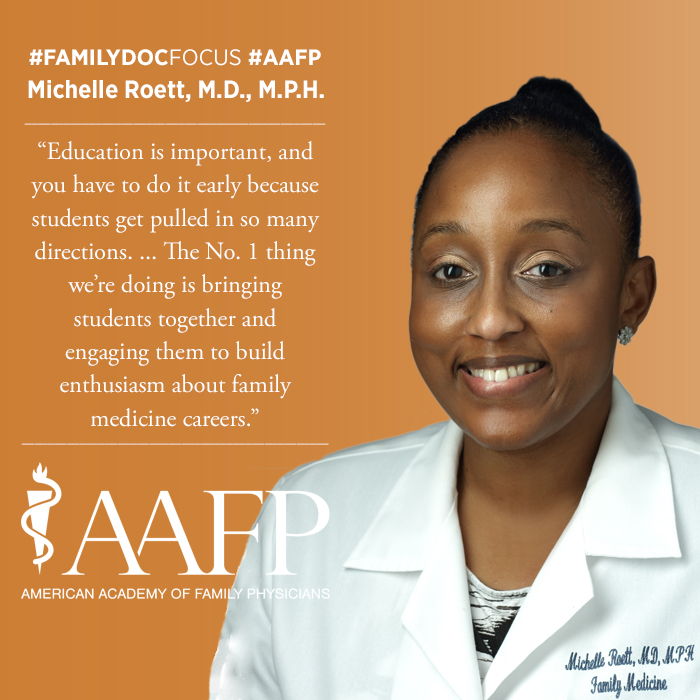'Moving the Needle' on Student Choice
October 22, 2018 10:17 am David Mitchell – From 2010 to 2014, the number of primary care physicians in Washington, D.C., dropped 15 percent. By 2014, the nation's capital had one family physician per 6,000 people, compared to a national average of roughly one FP per 3,000 patients.

Michelle Roett, M.D., M.P.H., a Georgetown University Medical School graduate who now is a professor and chair of the Department of Family Medicine, has seen enough of these trends. That's why she's working on both the local and national fronts to expand the family medicine pipeline.
Out of a class of about 200 medical students, Georgetown has had as many as 17 graduates match into family medicine residency programs in recent years. But in a typical year, she said, the number is closer to 10.
Exacerbating the problem is the fact that Georgetown graduates have bucked the national trend of practicing where you train. Roett said that nationally, about half of family medicine residents start their practices in the same areas as their residency programs. In Washington, the retention rate is closer to 20 percent.
"It starts with medical students and recruiting more of them who are underrepresented minorities from the underserved communities we care for," she said. "Moving the needle requires energy and enthusiasm."
Roett hopes to build enthusiasm with help from a grant received late last year that allowed Georgetown to re-establish an Area Health Education Center (AHEC). The school is partnering with five outpatient sites, including three federally qualified health centers, and is piloting a new track that allows students to build longitudinal relationships with patients. It will also offer third- and fourth-year students the opportunity to mentor first- and second-year students in the same settings.
The grant recently allowed the school to give four students $15,000 scholarships. The AHEC program also will provide high school and college students exposure to primary care careers.
"Education is important, and you have to do it early because students get pulled in so many directions," Roett said. "This is a structured program, and the No. 1 thing we're doing is bringing students together and engaging them to build enthusiasm about family medicine careers."
Through her involvement with the Workforce Education and Development Tactic Team for Family Medicine for America's Health (FMA Health), Roett initiated an effort to develop a best-practice guide for family medicine departments regarding issues that affect student specialty choice. Roett and the Association of Departments of Family Medicine Education (ADFM) are spearheading that project with hopes that the ADFM's Education Transformation Committee, which she chairs, will complete a draft this winter and publish the resource next year.
As a result of the FMA Health team's work, the eight leading national family medicine organizations have launched the 25 x 2030 Student Choice Collaborative to increase the percentage of U.S. medical school graduates selecting family medicine to 25 percent by 2030. It is through efforts like these, including a role serving on the AAFP Commission on Education, that Roett is contributing well beyond her own medical school and community to build the family medicine workforce.